Text Coming Soon!
 A group of Westminster College graduates, probably from the class of 1876. James Thomas Hunter (class of 1876) is standing in middle back row. Full Size |
 Four unknown Westminster College graduates from the 1870’s Full Size |
 A few players enjoy the new tennis courts on campus (1925) Full Size |
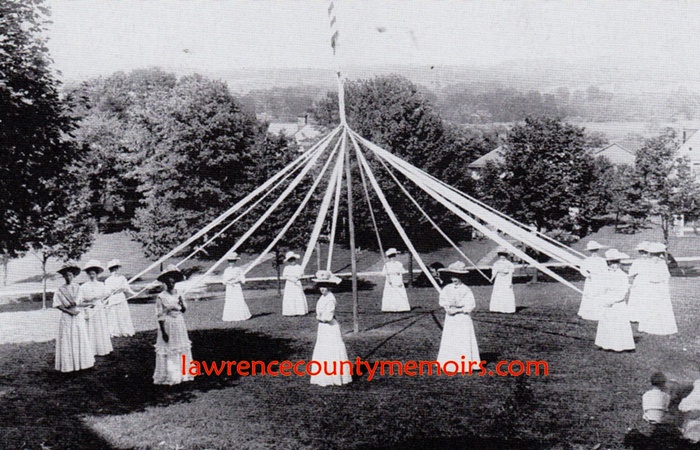 A part of the school’s old May Day festivities, which first commenced in 1907. (c1912) Full Size |
 A group of Presbyterian missionaries that visited the school in August 1909. (1909) Full Size |
 A member of the track and field team participates in the high jump in early 1933. This photo is marked as “Clark Goes Over.” (1933) Full Size |
 Westminster girls pose for a photo in gym class during the 1933-34 school year. (1933) Full Size |
 A photo montage of the tennis team from early 1933. (1933) Full Size |
 Several graduates among the Class of 1934. (1933) Full Size |
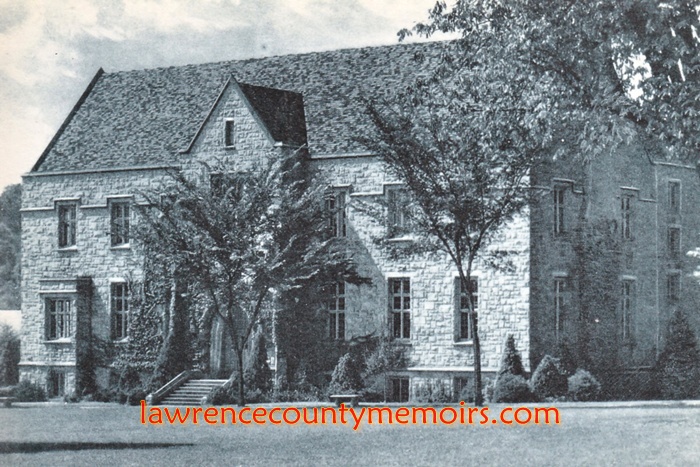 Ralph Gibson McGill Memorial Library. (c1946) |  The conservatory or greenhouse on campus. (c1946) |
 A view of the campus in the mid-1940’s. Full Size |
 The old gymnasium. (c1945) |  The lounge inside Ferguson Hall. (c1945) |
 Inside McGill Library. (c1946) |  A typical 1940’s dorm room inside Ferguson Hall. |
 Inside an engineering classroom. (c1946) |  An experiment underway in the chem lab. (c1946) |
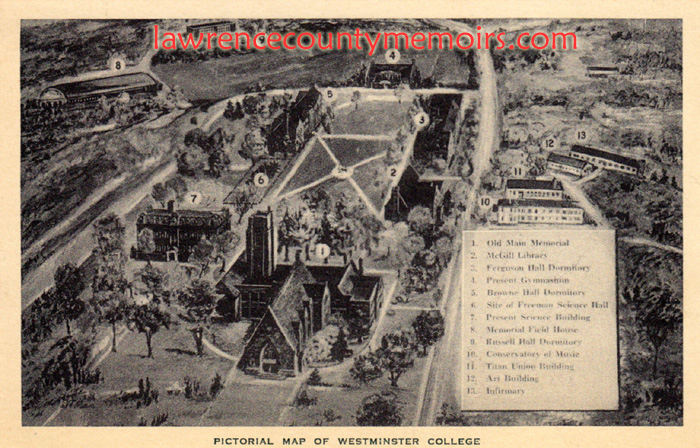 A postcard depicting the campus of Westminster College, initially known as the Westminster Collegiate Institute until the charter was amended in May 1897. (c1960) |
 The Old Main Memorial, the third “main” building, was designed in a Gothic style by renowned New Castle architect A.L. Thayer. It formed the anchor of a revived college – and the new Quadrangle – when it opened in the spring of 1929. Full Size |
 Audley Browne Hall was designed by the W.G. Eckles Company, another prominent architectural firm based in New Castle, and was built at the same time as the Old Main Memorial. Full Size |
 Mr. George Conway explains a problem in his math class. (1950-51) |  Mr. John Zimmerman, assistant professor of chemistry, instructs his pupils. (1950-51) |
 Dick Sylvester of the Titans breaks a long run against the boys from Grove City College during the 1951 season. Grove City trailed in the fourth but scored three late TDs to win 33-20. |
 (Sep 1952) |








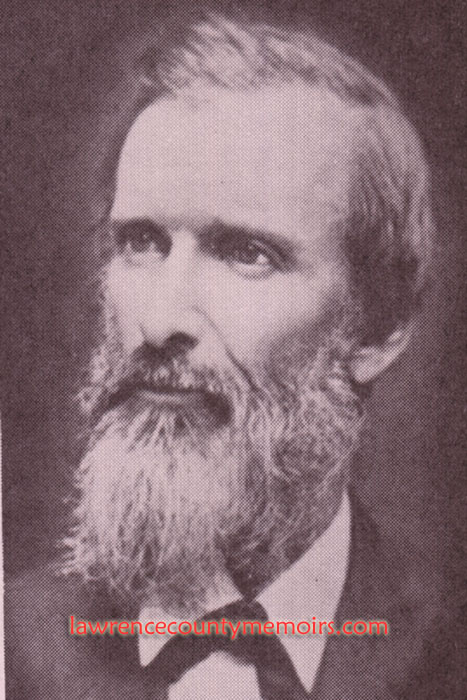







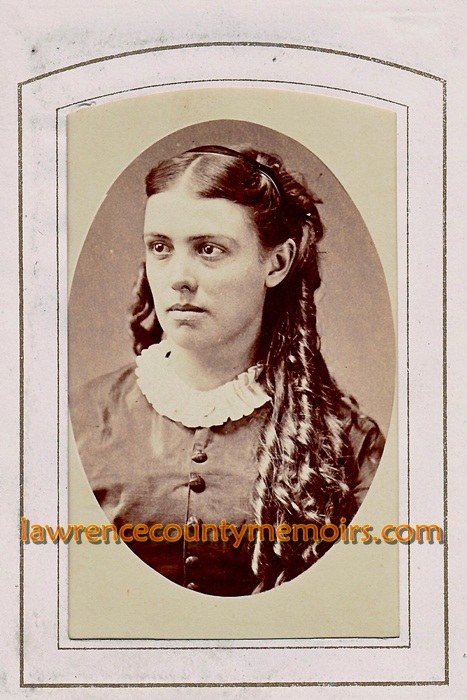















Comments
am #
Reverend D.H.A. McLean house
still sits on prospect street. its storage for college on one side and the other side is rented out to faculty
Richard S. Clark #
http://www.findagrave.com/cgi-bin/fg.cgi?page=gr&GRid=100038141
I note at the top of the page that they list Rev. George C. Vincent as “(1813-??)”. That’s an easy to find answer. The link above will take you to a photo of his headstone.
What was not noted was that Rev. Vincent was the man who established the Washington, Iowa church in 1841, which was the same church that Rev. Patterson, shown next to him, took over in 1866. Rev. Vincent remained in Iowa until 1847, having been sent out as a church missionary to Illinois and Iowa as early as 1839, with “general directions” but wide discretion as to where and when to preach. It appears he came across some Iowa settlers that he knew, or knew of, and established his own church there in Washington – but that was not the first of the churches he established.
It is noted here that Rev. Vincent served in the Civil War. So did all 3 of his sons from his first marriage. Only one of them, John Walker Vincent, was married, with a little daughter, and of course, that was the son who did not survive the war (exact same situation was found in my wife’s family – 3 brothers, 1 married with a daughter, and the married one died). I read that Rev. Vincent chaired the Iowa Anti-Slavery Society meeting in 1844, and petitioned the statehood convention to adopt civil rights for all Iowans. His middle son, Alvan, was a Captain of colored troops during the Civil War. Alvan took up the ministry after the war, carrying on in his father’s footsteps, but with Slavery abolished, Alvan took up support of the Temperance movement.
Anyway, an interesting family with an interesting history.
Richard S. Clark #
In my last note, I mentioned John Walker Vincent, who I believe was a graduate of this college, and was the son of Rev. George C. Vincent who was killed in the Civil War. I then noticed a photo, above, depicting Prof. William Mehard. As history would have it, William Mehard was the clergy who performed the wedding ceremony of John Vincent and Martha R. Hunter. When Martha applied for her widow’s pension during the war, she learned that Rev. Prof. Mehard had not filed their marriage with the courthouse, and that he was unavailable due to his service in the war. She remarried in 1866, but still needed proof of her marriage to John Vincent, to secure the minor’s pension for their daughter, Mary. She obtained said proof once Mehard returned to the college, after the war, as he wrote out a full page affidavit of the marriage.
Comment